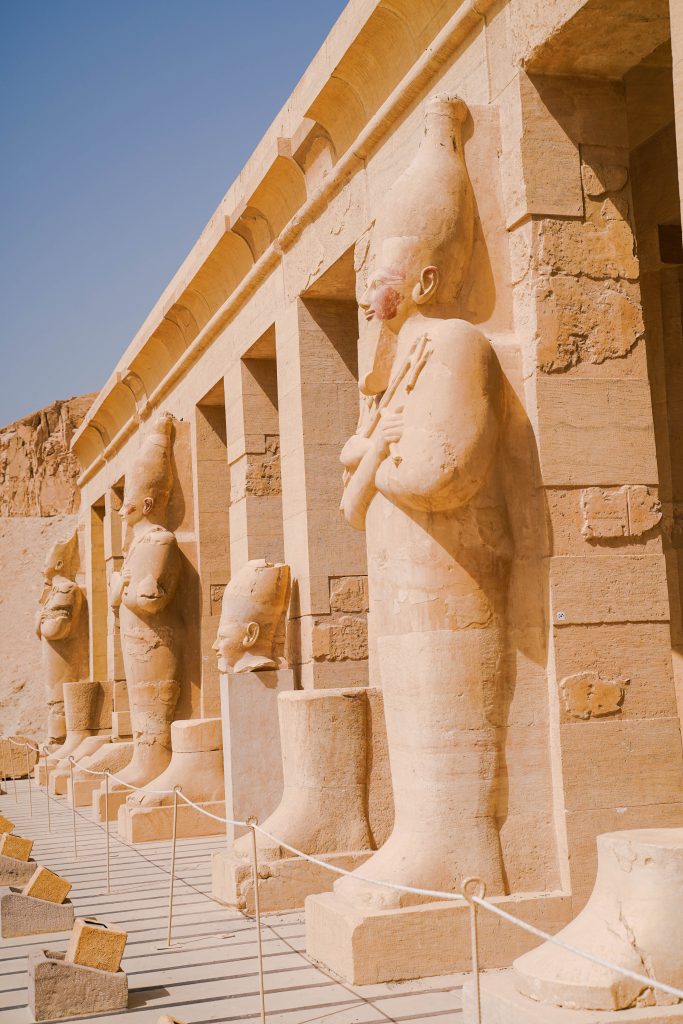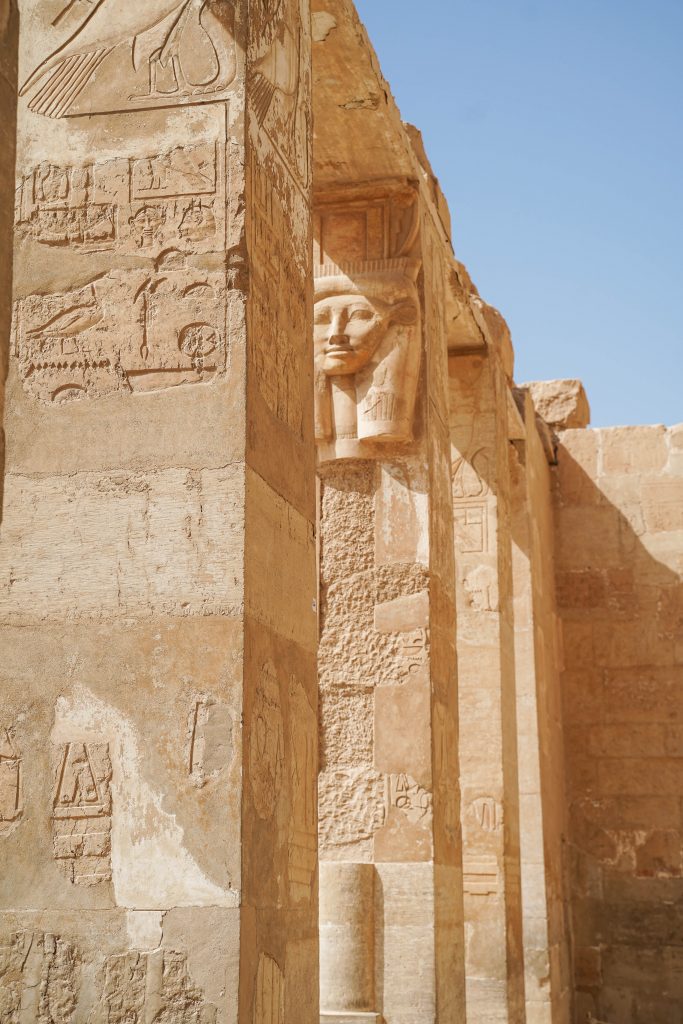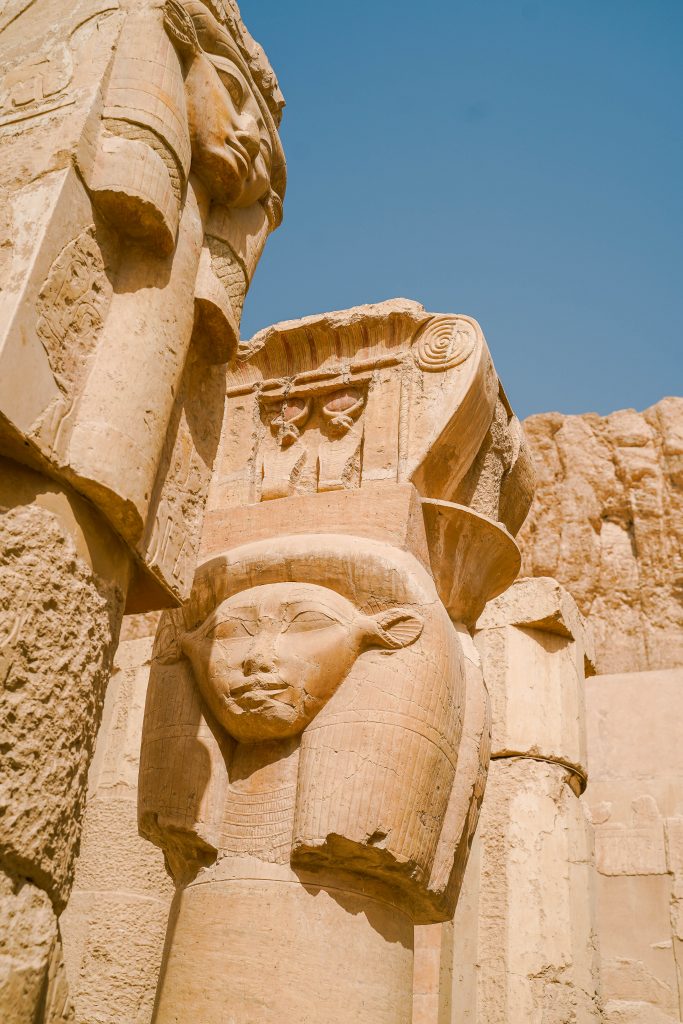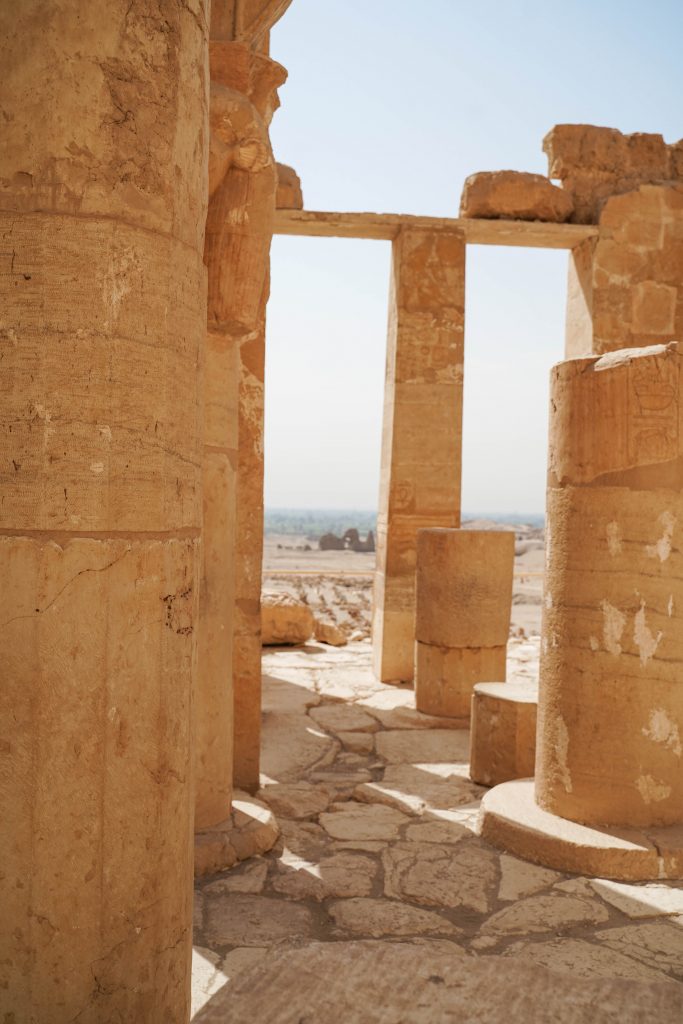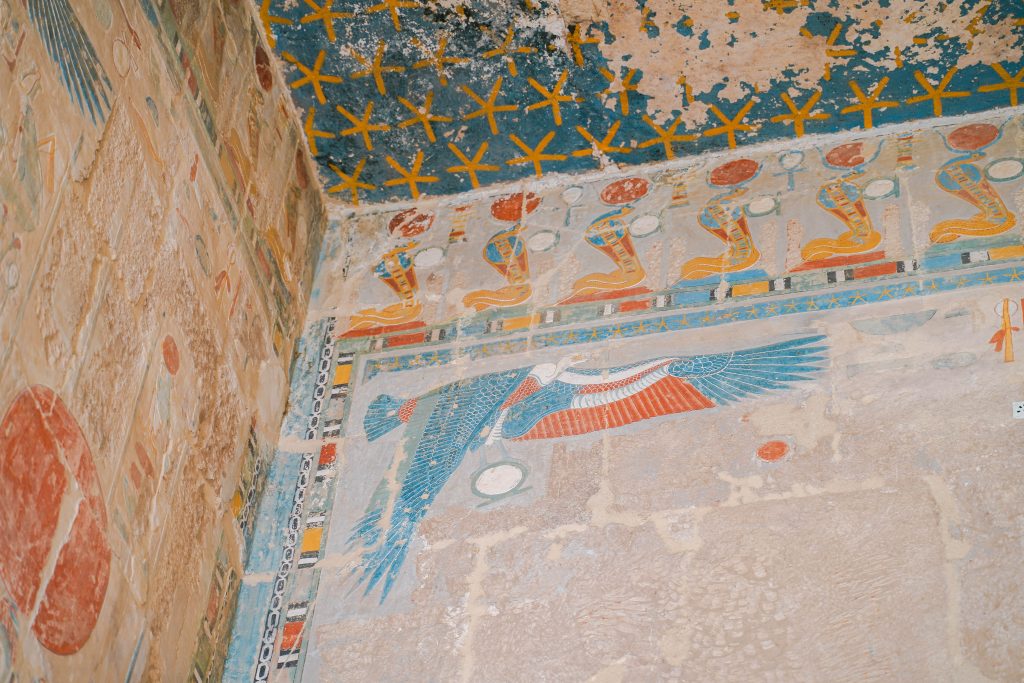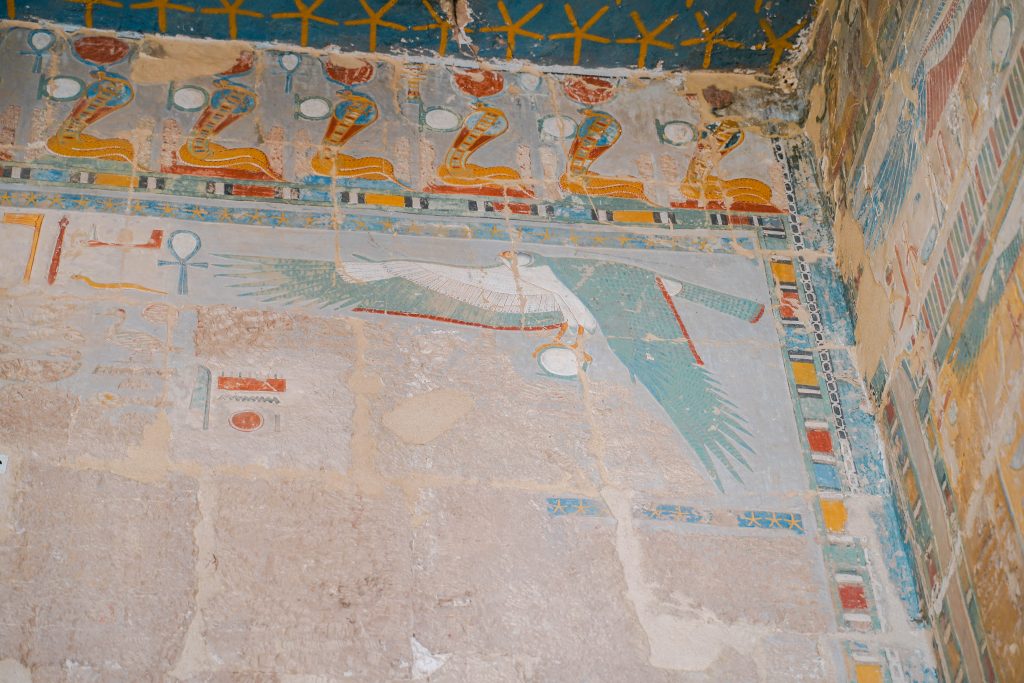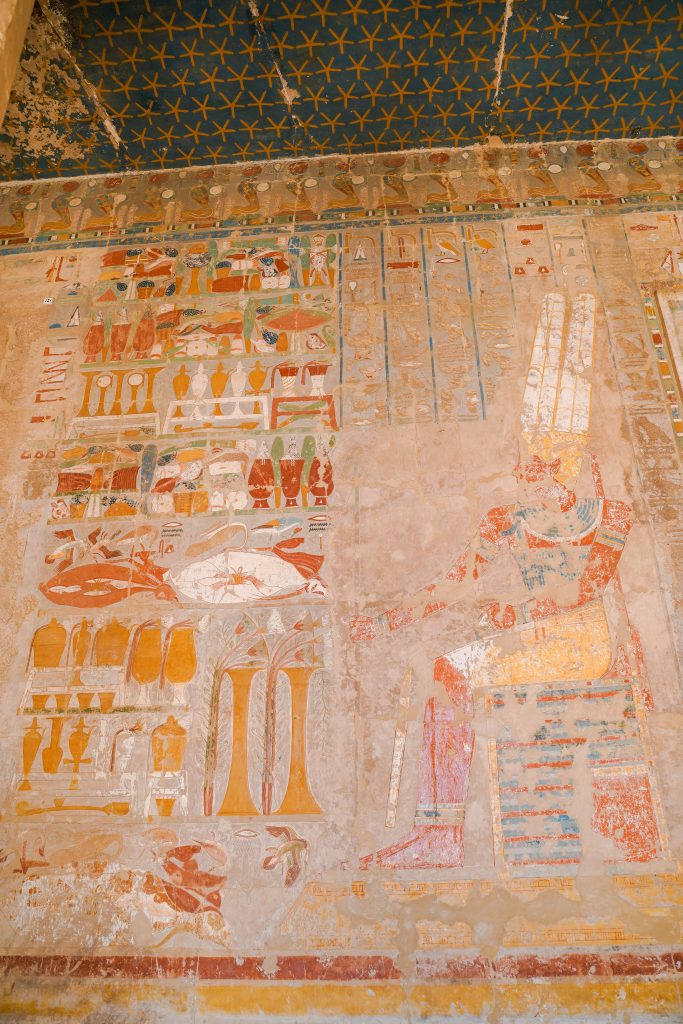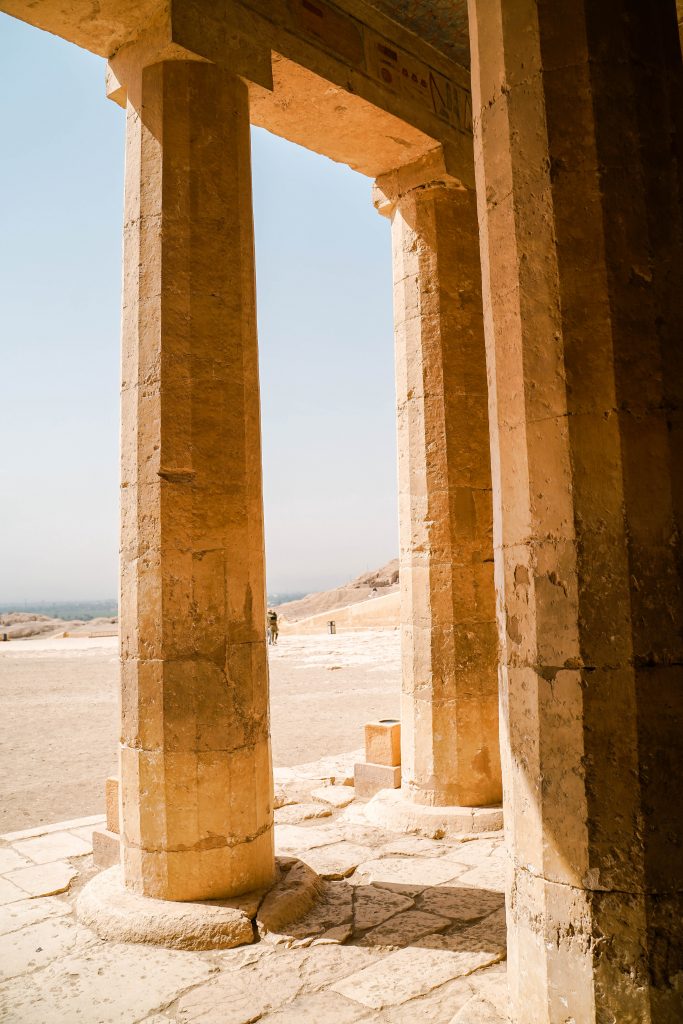This temple is unlike any of the others you will see on your visit and is widely considered a great architectural wonder of the world. It is cut into the cliffs of Deir el-Bahari (another name used for it) and involves many floors and terraces.
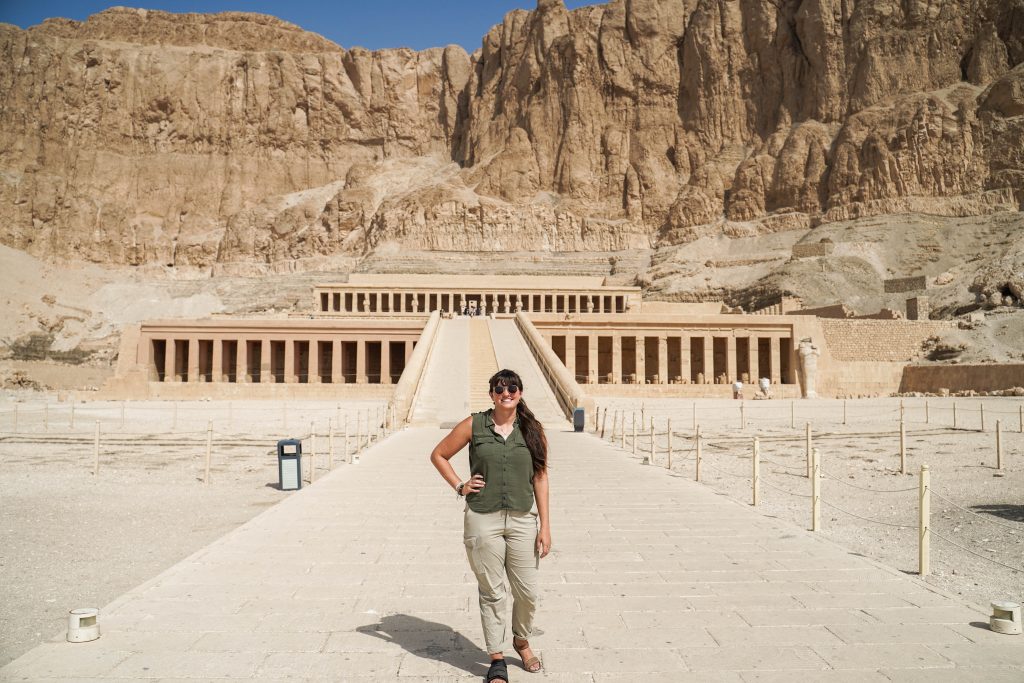
About Queen Hatshepsut
Queen Hatshepsut is somewhat a controversial character with some legends depicting her as good, and others… power hungry. She came to power through somewhat dubious, albeit justified means. She had perfect blood lines, being both a daughter, sister, and wife of a king and a great knowledge of religion to establish herself as wife of the god Amun. She was the chief wife of Thutmose II and when he died- became a joint ruler with her step son Thutmose III (who was only 2 at the time). This is where the controversy begins.
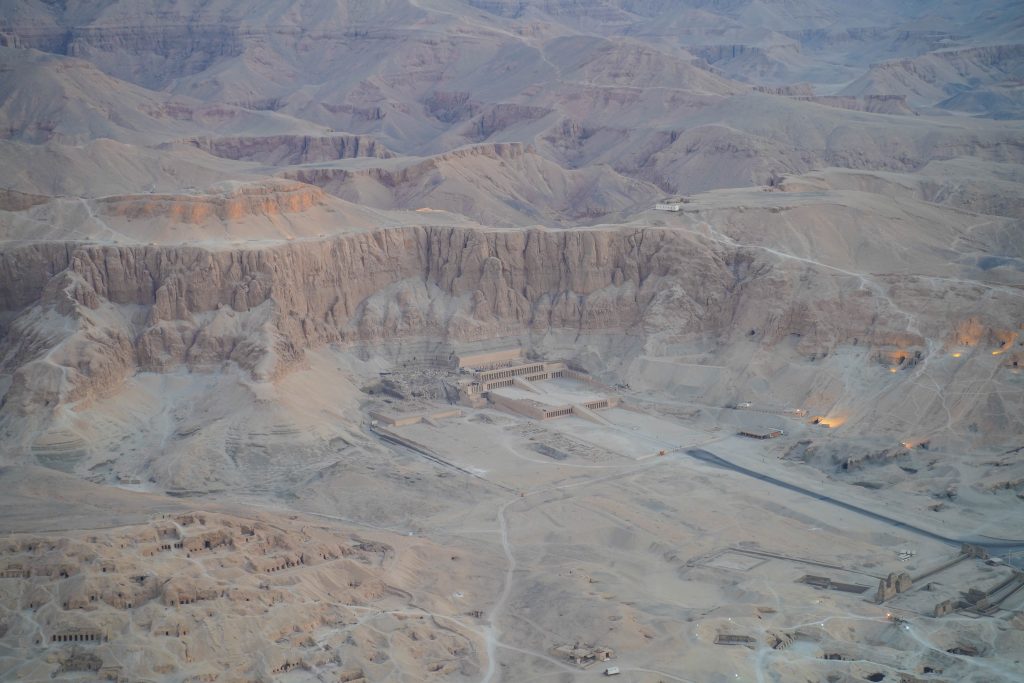
She assumed the position of pharaoh and sent her step son away from the capital to be raised. Some reports claim she sent Thutmose III away for safety until he was old enough to assume the throne himself. Others claim that even once he was old enough, instead of being allowed back to the capital he was sent on military campaigns while Queen Hatshepsut maintained the exalted position of Pharaoh.
This second option seems the most likely to be true as there are records of Thutmose III’s military campaigns and evidence of Thutmose III’s great displeasure with his step mom. Once she died, her step son either destroyed or replaced many of her religious depictions with himself both at this temple and others she had contributed to.
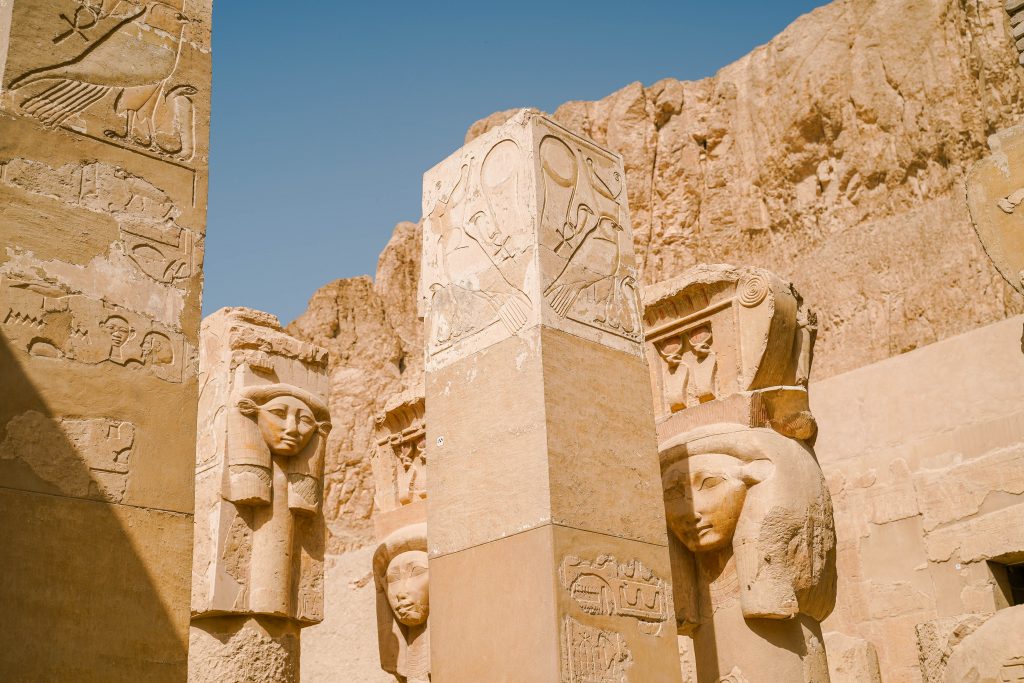
Regardless of her motivations, her reign was largely successful and she is regarded as one of the first major female players in history. She established new trade routes and became one of the most prolific builders in ancient Egypt. Her reign is not known in total length but is estimated to be around 20 years. (a very successful reign for the time)
About the mortuary temple
The temple is primarily dedicated to the god Amun (whom Hatshepsut used to legitimize her reign) although it includes shrines to 2 other gods.
The shrine to Hathor
Hathor is venerated on the left side of the temple with a small portico containing scenes of Hathor being fed by Hathsepsut and 4 columns with Hathor capitals. This then leads into 2 hypostyle halls- one contains 12 columns and the second contains 16 columns. Beyond these is a vestibule containing a sanctuary depicting Hathor with Hatshepsut – who represented herself as a reincarnation of the goddess.
The shrine to Anubis
One the right side is a smaller shrine to the god Anubis. It contains a hypostyle hall with 12 columns and 2 small rooms that end in a small niche. The images throughout the hypostyle are very interesting depicting multiple offerings to the god Anubis and a large relief showing Anubis escorting Hathshepsut to the shrine. The depictions on this side still have a lot of the original color.
The final shrine at the top level is of course to the chief god Amun. We didn’t spend as much time up there as the top level is crawling with people wanting to show you something or be in your photo (for “tips”) but it is quite the experience just walking the ramp up to that top level of the temple and looking out.
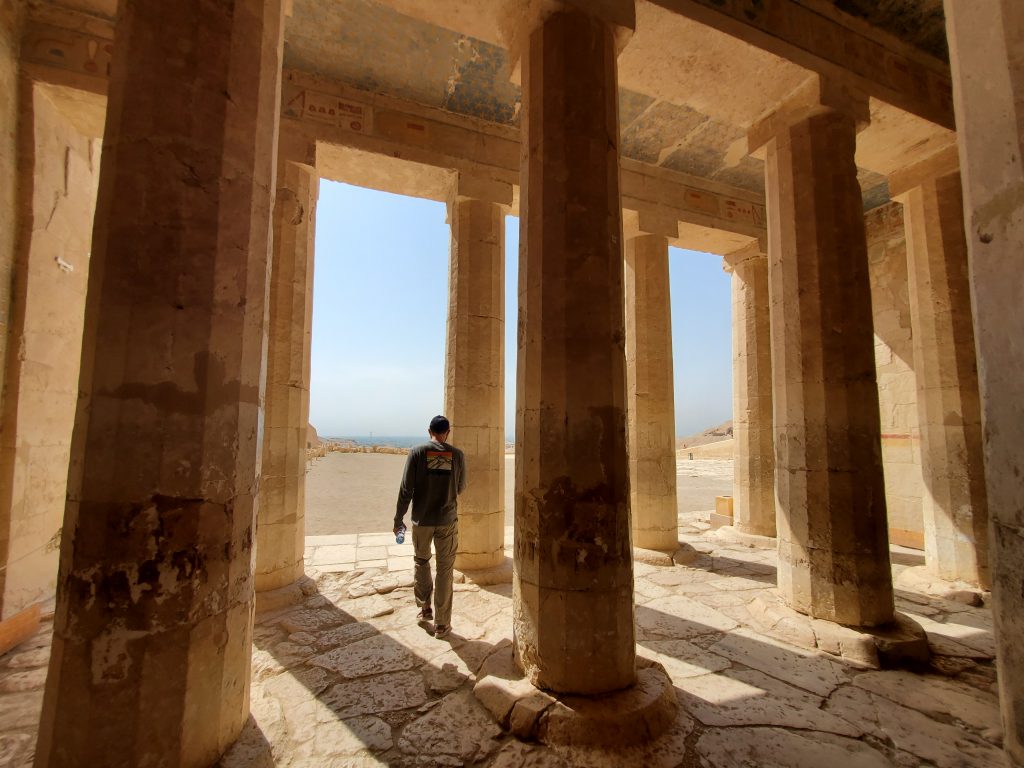
Time needed to visit Hatshepsut’s Temple
It really doesn’t take very long to visit making it a great add on to the Valley of the Kings. To walk around the whole area, it is maybe 30 minutes – 1.5 hours depending on if you go with a guide or not. We spent around 1 hour.
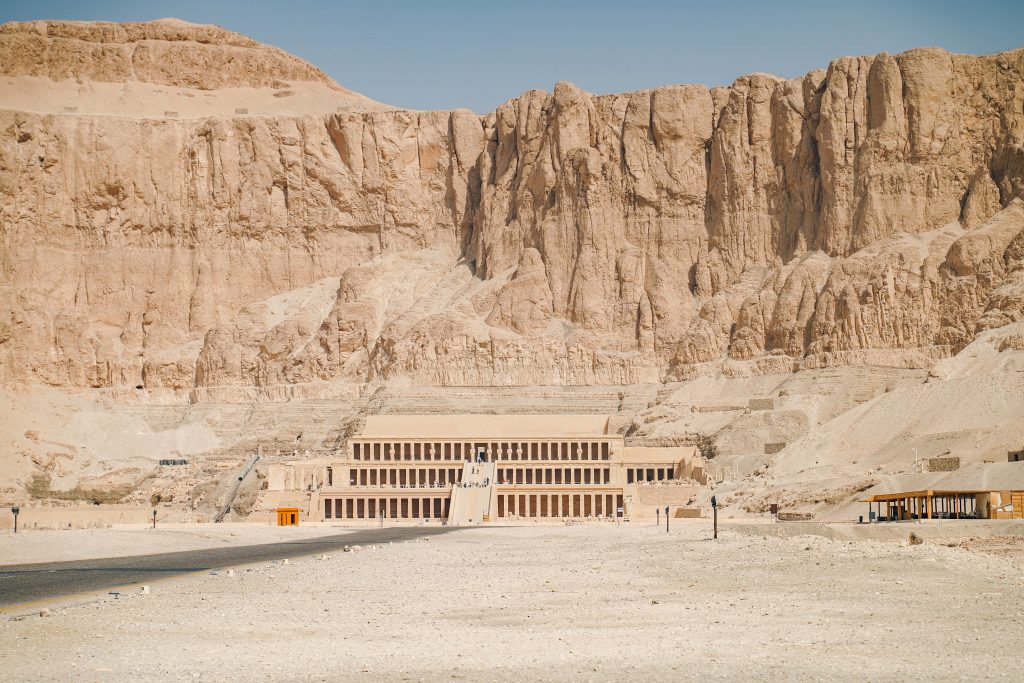
Cost for Hatshepsut’s Temple
The cost was included in our tour but if you are interested in visiting on your own here are the costs:
140 EGP adult/ 70 EGP student
Cameras and phones are free! No flash allowed however.
Our experience
Overall I would definitely consider this temple a must do if you’re in the area since it is an easy place to visit with other West Bank attractions. Would it entice me to travel all the way to Egypt? Probably not but if you’re already there for all the other amazing places, definitely check this one out since it really is UNLIKE the other places we saw.

